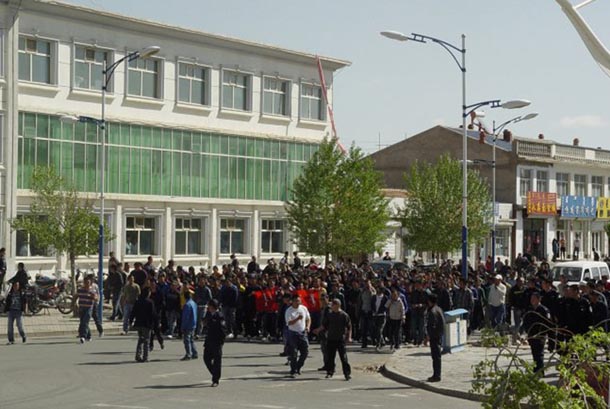 Dharamshala: Following a week-long series of protests in Inner Mongolia, Chinese authorities have recently declared martial law and deployed riot police and paramilitary forces in major cities in the region in attempt to quell the demonstrations.
Dharamshala: Following a week-long series of protests in Inner Mongolia, Chinese authorities have recently declared martial law and deployed riot police and paramilitary forces in major cities in the region in attempt to quell the demonstrations.
The protests started on May 25 after a herder was killed by a Han-Chinese truck-driver following a stand-off between coal-transporters from the growing mining industry and local herders who were protesting the loss of grazing land and the forced displacements of more than a quarter million Mongolian nomads.
The official Chinese strategy of silencing the protesters by tightening security and censoring internet and other media, however, only seems to infuriate the demonstrators even more, writes the US-based NGO Southern Mongolian Human Rights Information Center (SMHRIC) on their website.
On May 30, according to SMHRIC, hundreds of Mongolians took to the streets of the regional capital Hohhot, to demand the rights of Mongolians and the release of detainees. Reportedly the protesters were dispersed by riot police after an hour with dozens arrested.
On the same day, the Inner Mongolia Normal University posted an "important notice" to warn all teachers and students of all high schools and colleges not to leave the school according to an urgent notice received from "higher authorities". Major schools, colleges and universities in Hohhot, with thousands of Mongolian students, have thus been heavily guarded by riot police and paramilitary forces, and students closely monitored by teachers and security personnel inside the campuses.
These measures have not stopped the protests entirely, however, as many Mongolian students creatively carried out in-campus protests by throwing Chinese language textbooks out of the windows.
Chinese authorities have also issued warning messages to companies and institutions with large numbers of Mongolians as well as sending out text-messages, warning residents to stay indoors due to possible violence on the streets, a source told SMHRIC.
On top of that, local government officials, lower level administrative police units and local government workers have been dispatched to Mongolian communities and households to do so-called "ideological work" and spreading the propaganda of China's ethnic policy.
On Sunday, May 29, state-run news media reported that Inner Mongolia's Communist Party secretary, Hu Chunhua, had met with students and teachers and promised justice in the killing of the other activist, wrote the New York Times. Also, officials have in recent days announced plans for free tuition and textbooks for Mongolian high school and vocational students as well as pledging to spend $680 million to improve drinking water, transportation and agriculture.
Enghebatu Togochog, president of the Southern Mongolian Human Rights Information Center, told the New York Times that government largess would not necessarily address the underlying problems of the region's Mongolians and might actually make them worse if development projects aimed at moving shepherds off the grasslands.
"The root cause of the problem is not money," Mr. Togochog said. "The problem is the conflict between the Mongolian people's efforts to maintain their distinct culture and way of life and the Chinese authorities' attempts to exploit the natural resources of the region."


![Tibet has a rich history as a sovereign nation until the 1950s when it was invaded by China. [Photo: File]](/images/stories/Pics-2024/March/Tibet-Nation-1940s.jpg#joomlaImage://local-images/stories/Pics-2024/March/Tibet-Nation-1940s.jpg?width=1489&height=878)















